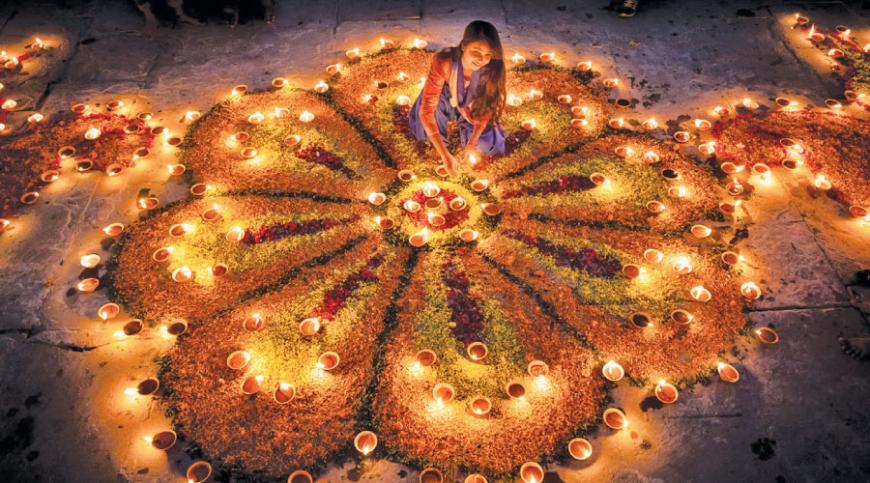
Lights, sweets, celebrations and camaraderie are what makes this festival brighter. Thus, illuminating light into darkness, and making it Deepavali or Diwali.
Deepavali is a worldwide festival celebrated today by Hindus, across the globe and mainly, in Sri Lanka, neighbouring India and Indians-based in Singapore and Malaysia.
The concept of the third and the last festival in the calendar for Hindus is how Lord Rama killed Narahasuran. Narahasuran (Asuran) was known to be a nasty character, torturing people and holding them captive in darkness. As the torture turned unbearably agonising, the victims had reported it to Lord Rama, who in turn is reported to have rescued the victims,and emerged as their saviour. In the battle, Rama confronted Asuran head on and succeeded in taking him down.
Realizing Asuran’s fall was imminent, he had requested his demise to be rejoiced grandly worldwide, as a day of darkness fading into light. Ever since that victorious day, Diwali is celebrated as a day of light defeating darkness and drove in to a world of illuminated brightness.
In Sri Lanka, though, it is predominantly and specially celebrated by upcountry Tamils so much so, the festival has become highly anticipated. The hill country Tamils working away from home, take time off from the hustle and bustle of the rat race. Employers too, send them on a happy festive mood by giving special bonanzas.
However, in the fast-paced era, Hindus away from home are forced to have it wherever they are stationed.
The festival is marked by large firework displays, to remember the celebrations which, according to the legend, took place upon Rama’s return. Those celebrating the festival also light traditional earthen diyas (candles) and decorate their houses with colourful rangoli artworks – patterns created on the floor using coloured rice or powder. During Deepavali, families and friends share sweets and gifts and there is also a strong belief in giving food and goods to those in need. It is also traditional for homes to be cleaned and new clothes to be worn at the time of the festival.
The well-wishing fills the air, at temples and homes, visiting friends and kith and kin with the sweet-and-sour snack touch.
Another story attached to Diwali, followed and believed by North Indians is that, this historical day saw the great and grand return of Rama and Sita, his consort.
It all started with, Lord Rama, the prince of Ayodhya, ordered by his father, King Dasharatha, to leave his country and come back after living in the forest for 14-years. Accordingly, Rama went into exile along with his devoted wife Sita. However, in the middle of it Ravana, the demon king of Sri Lanka, abducted Sita and took her away to his island kingdom in this country. Rama went for the kill in the quest of Ravana. Rama rescued Sita and returned to Ayodhya after a lapse of 14 -years.
Their return virtually after one-and-a-half decades saw theelated and ecstatic community rejoicing the return.
Though, there are two stories attached to this special day, in the Lankan context, it is the first story that is followed by Lankan Hindus.
